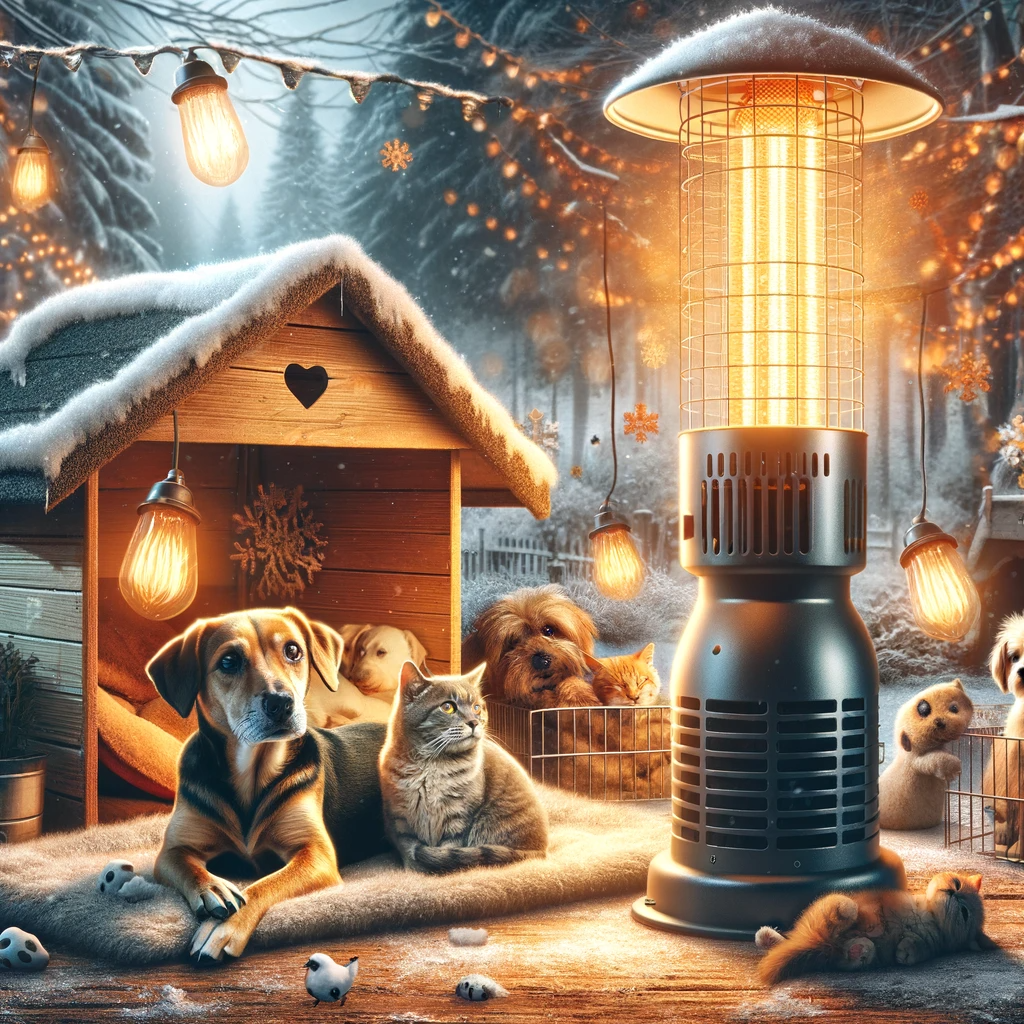Heat lamps are a common solution for keeping outdoor pets warm, especially during colder months. However, their use comes with both benefits and risks. This blog post aims to explore the safety of using heat lamps for outdoor pets, helping pet owners make informed decisions.
Understanding Heat Lamps
Heat lamps are a type of infrared lamp used to provide warmth to animals. They’re especially popular for pets that live outdoors, such as dogs, cats, chickens, and rabbits. These lamps emit infrared radiation, which directly warms objects and beings in their vicinity without heating the air around them.
Benefits of Heat Lamps for Outdoor Pets
- Consistent Warmth: Heat lamps provide a steady source of warmth, which is essential in maintaining the health of outdoor pets during cold weather.
- Flexibility: They can be used in various settings, such as dog houses, kennels, or barns, to provide necessary warmth.
- Health Benefits: By maintaining a consistent temperature, heat lamps can prevent hypothermia and other cold-related health issues in pets.

Risks Associated with Heat Lamps
Despite their benefits, heat lamps pose several risks if not used correctly.
- Fire Hazard: One of the most significant risks associated with heat lamps is the potential for causing fires. If a heat lamp is too close to flammable materials, it can ignite them.
- Burns: Pets may accidentally come into contact with the lamp, leading to burns.
- Overheating: Improper use can result in overheating, causing heat stress or heatstroke in pets.
Safety Measures When Using Heat Lamps
To safely use heat lamps for outdoor pets, consider the following precautions:
- Choose the Right Heat Lamp: Ensure that the lamp is suitable for outdoor use and designed for the type of pet you have. Ceramic heat emitters are a safer option as they don’t emit light, reducing the risk of disturbing your pet’s sleep cycle.
- Secure Installation: The lamp should be securely installed to prevent it from falling or being knocked over. Make sure it’s placed at a safe distance from any flammable materials.
- Use a Guard: A guard or cage around the lamp can prevent direct contact, reducing the risk of burns.
- Regular Monitoring: Check the temperature regularly to ensure it’s not too hot or too cold. Use a thermostat-controlled system if possible.
- Provide Adequate Ventilation: Good ventilation is crucial to prevent the buildup of excessive heat and to maintain air quality.
- Regular Maintenance: Regularly check for any damage to the lamp, wiring, or connections.
Alternatives to Heat Lamps
If the use of a heat lamp seems too risky, there are alternatives:
- Insulated Shelters: Well-insulated shelters can retain the pet’s body heat and keep them warm.
- Heated Pet Beds: These are safer than heat lamps and can provide warmth without the risks of burns or fires.
- Straw Bedding: Straw is an excellent insulator and can help keep pets warm naturally.
Conclusion
While heat lamps can be an effective way to keep outdoor pets warm, it’s crucial to understand the risks involved and take appropriate safety measures. Regular checks and maintenance, along with the correct setup, can mitigate many of the dangers. Always consider your pet’s specific needs and the setup of their outdoor environment when deciding on a heating solution. Remember, the safety and comfort of your pet should always be the top priority.
